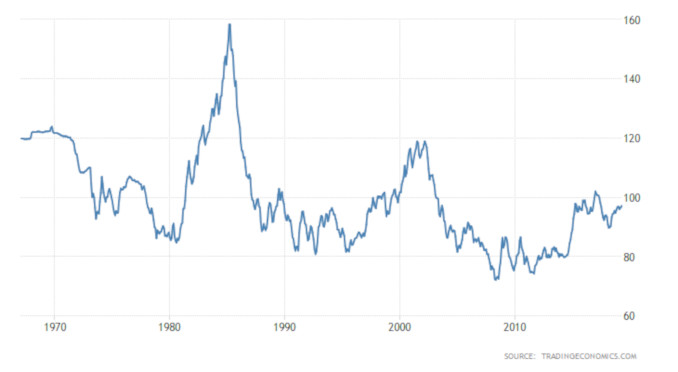
“Looking forward, IMF projections imply that the dollar zone will return to the sizeable deficits that were last seen in the mid-1980s. On this view, the dollar zone current account deficit would be larger than it has been since the euro came into existence 20 years ago. On current evidence, if the renminbi becomes a key currency, it would carry a substantial share of global GDP out of the dollar zone. This would leave the dollar zone deficit all the wider.” ~ Hiro Ito and Robert N. McCauley, Bank for International Settlements, December 2018
By Catherine Austin Fitts
This week I present the 1st Quarter 2019 Equity Overview with charting from Rambus Chartology. Check out the 1st Quarter 2019 Wrap Up web presentation here for the quarterly financial charts and Rambus Chartology when posted on Thursday. Just use your Solari Report password to login.
The Anglo-American alliance is in a period of significant stress. While the United Kingdom buys time with a Brexit extension until October 31, the dominance of the U.S. dollar erodes. All pretense of soft power has given way to hardball—from the arrest of Julian Assange in London last week to the Mayor of New York’s attempt to destroy the health and religious freedoms of the Williamsburg Orthodox Jewish community.
There are indications that the U.S. is preparing to follow Netanyahu, emboldened by election success, into a suicidal confrontation with Iran. In the mix, FASAB 56 can now finance secret armies without the interference of seasoned Marines such as Generals Mattis and Kelly. The global neocons do not appear deterred by the recent calculation that the United States has spent $5.9 trillion on the War on Terror, including war in the Middle East, since 9/11—a time when U.S. pension funds were still fully funded.
This signals weakness and insecurity for the U.S. dollar. Like sharks in the water, global institutions are tracking the inability of the American political and business establishment and their global allies to manage the transition without excessive violence and scapegoating. Here is the historical chart for the U.S. Dollar Index—still in an upward trend while the U.S. dollar remains “dangerous, but dominant.”

Officially reported U.S. Treasury debt is starting to expand at a rapid pace. Outstanding debt is now greater than the U.S. annual GDP and is expanding at an increasing rate. Treasury debt grew by 6% in 2018 and is expected to grow by 8% in 2019, despite many years of “economic recovery.” If the economy slows or goes into a recession, debt growth will accelerate. Add unfunded liabilities, and the picture deteriorates further.
This Thursday, I will talk about what may lie ahead and what it means for you, your finances, and risk management. I will make sure to cover again questions I have received this quarter about precious metals and their storage.
In Let’s Go to the Movies this week, I will review the film Green Book. When I saw the preview, I dismissed it as politically correct propaganda. However, I watched it on my return flight from Zurich and enjoyed a wonderful movie—based on a true story—about music, friendship, and the power of community. Well written and brilliantly acted, Green Book celebrates our humanity and American road tripping! It reminds us that no matter how rough the ride, there are allies everywhere.
Please e-mail your questions for Ask Catherine or post them at the Money & Markets commentary here.
Talk to you Thursday!
Related Reading:
Bank for International Settlements: CNY Risk to the Dollar
Caveat Emptor: Why Investors Need to Do Due Diligence on U.S. Treasury and Related Securities
The Real Game of Missing Money
The Missing Money
